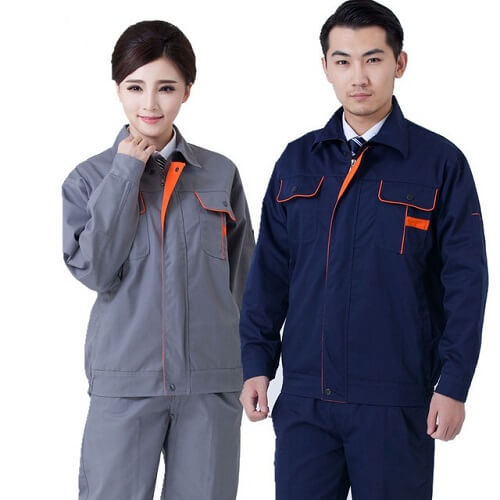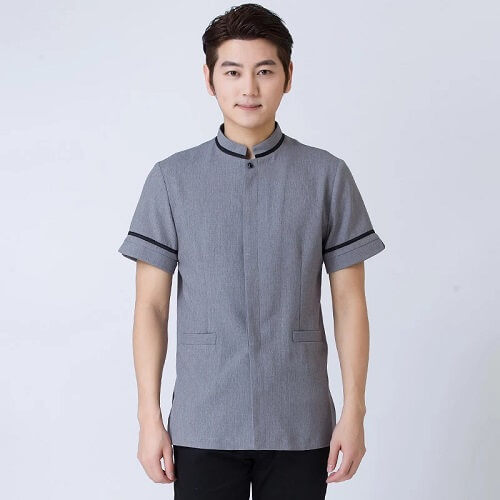
But, you must be aware of their breathability as well as how they react to various temperatures before making a decision. Who says uniforms must be boring and boring? This approach ensures that everyone has access to comfortable and well-fitting uniforms.
Knowing the physical demands of the job is crucial to ensure the design of uniform. Ensuring that uniforms are available in various sizes and fits is crucial.
The design of an appropriate uniform is a complex job. Polyester isn't prone to wrinkle and it mimics the characteristics of wool and cotton providing flexibility.
Take a look ahead at the future trends and developments in the logo and designs. Who says uniforms should be boring and dull?
The wearers will be exposed to the heat of the sun or at a desk with air conditioning? Yet, the wearers' comfort cannot be compromised. Who says uniforms must be boring and boring?
It's about creating a harmony that combines both elements in a choral of branding expression.

Cotton is able to adapt well to different conditions, keeping you cool during the scorching summer months and also acting as an excellent insulation in winter. They combine the advantages of synthetic and natural fibers, presenting a balanced solution for the changing temperatures. Remember, a person who is comfortable is a productive and happy one!
Ergonomics assures the user that design is able to meet the physical demands of the wearer which improves the comfort and efficiency of employees. The process of incorporating logos from companies into your uniforms is like stepping across the expanse of advertising.
It's not a one-size-fits all thing. Discover the new frontier of technology by using synthetic fabrics such as rayon and polyester.
When it comes to uniforms, customization not only breathes in a whiff of uniqueness but also fosters a sense of belonging and identity among team members or employees. However, how do we achieve the right balance between style and professionalism as well as comfort when it comes to uniforms?
Colors that absorb heat are dark, while lighter colours reflect that heat. The main aim is to create clothes that people feel comfortable and comfortable in, which allows them to complete their work effortlessly and with confidence. The logo shouldn't just appear as a splash of color and fonts, it must be a beacon to guide clients to your brand that reflects its values and distinctiveness.
If you are standing in front of your closet every morning, what is on your thoughts? It's similar to putting flags on a peak in order to claim the visual space to represent your company.
In casual settings where the environment is more informal blends and synthetics could create a stylish appearance. Should it be loose-fitting or should it be an elongated fit?
They are a second skin that could help or hinder performance. The fabric you choose to clothing plays an important factor in the selection.

Ergonomics makes sure that design meets the body's needs to improve efficiency and comfort. The compass of innovation is one that guides towards new frontiers. When a logo is seamlessly integrated into this canvas, it results in a masterpiece of visibility.
But keep in mind that not all heroes wear a cape Sometimes, they need careful care, such as ironing and regular maintenance. The fabric of your corporate wear plays a monumental role in this decision.
Imagine going to work for a whole day's work but the uniform you're wearing is uncomfortable, tight, or not fitting properly. Different fabrics reflect different degrees of formality.
It's similar to choosing the direction of wind for smooth sailing. The zipper, pockets and buttons all contribute to the utility of an outfit.
Who said uniforms have to be boring? Uniforms are more than just clothes; they are a second skin that can either enhance or hamper performance. Why settle for one when you can have a blend?
Should it be cotton for its breathability? They combine the advantages of synthetic and natural fibers, offering a balancing choice for the changing temperatures.
They are not just clothing; they're a second skin that could improve or hinder performance. It's an established and tested location that is always visible, always in tune with the tempo of branding image.
They ensure that your uniform is a safe vehicle for the brand's journey. Look ahead into the future trends and currents of logo and uniform designs.
Uniforms must be easy to maintain and clean without the need for special care. A logo that is too big could obscure the uniform's design, whereas too small could make it look like it's been tossed away in the sea. It's more than just creating an aesthetic by incorporating elements that provide all-day comfort.
Blending the strengths of several materials, blends such as cotton-polyester provide durability, wrinkle resistance and breathable. Cotton is able to adapt well to different environments, allowing you to stay cool during the scorching summer months and also acting as an excellent insulation in winter.
It’s like painting a canvas with the colors of identity, role, and ethos that your team embodies. In the maze of fabric picking one that is compatible with the environment and the formality of work is a skill we'll master in the near future.
But how do you navigate through the seas of design, color, placement, and style to ensure that your brand not only survives but thrives in the competitive wilderness? If the setting is one that exudes class and elegance wool and cotton suits are often unchallenged.

When designing uniforms for marketing, consider the comfort and functionality of the attire, the visibility and placement of branding elements, and the choice of colors to ensure that it aligns with your brand's identity. It's also important to select materials suitable for the intended use.
Yes, most corporate uniform suppliers in Singapore offer customization options. Businesses can choose specific branding elements, such as logos, colors, slogans, and fabric options, to ensure that the uniforms align with their unique brand identity.
When selecting uniform suppliers, businesses should consider factors such as the supplier's reputation, quality of materials, customization options, pricing, lead times, ethical manufacturing practices, and adherence to sustainability goals, if applicable.